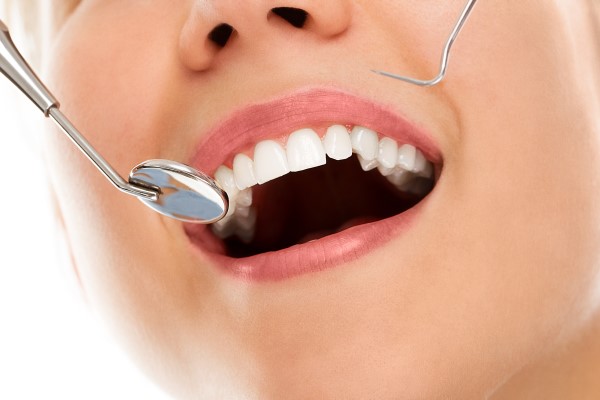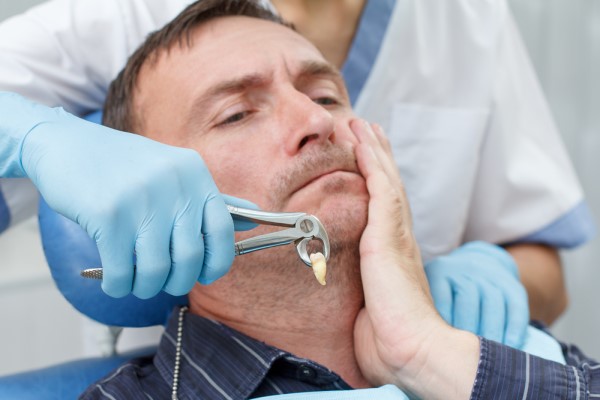Infection and Inflammation From Gum Disease

At its core, gum disease is an infection that will spread as far as it can, but only if you let it. For this reason, dentists and periodontists recommend prevention and early detection.
The infection that is gum disease becomes more challenging to manage the longer that it goes untreated. This explains why severe gum disease can become a chronic condition that lends itself to containment rather than reversal. A closer look at infection and inflammation from gum disease lets you know what to expect from treatment.
Stages of gum disease
The earliest stage of gum disease is hard to detect, with few symptoms and no discomfort to speak of. It takes the keen eye of a dentist to catch gingivitis before it progresses. This is one of the many reasons that regular dental visits are essential.
Mild symptoms start to appear as the infection progresses, with bleeding gums being the most obvious. The person may also notice the following common signs of gum disease:
- Chronic bad breath
- Swelling and tenderness in the gums
- A loss of firmness in the gums
- The gums may appear unusually red
- Gum recession
More symptoms appear as periodontal disease progresses from moderate to severe. The bad breath becomes more pronounced, and the teeth start to come loose. At this stage, the patient will know that something is seriously wrong because of the discomfort that they are enduring. This would be an ideal time to see a dentist.
Bacterial infection and gum disease
The mouth is an ecosystem that stays healthy by keeping harmful bacteria at a minimum. This involves having meticulous oral hygiene, eating a diet that is low in sugar, and staying adequately hydrated.
Slacking off on any of these measures will lead to an increase in plaque and the bacteria that thrive on the plaque. What happens next is an attack on the gums and, often, the teeth. Bacteria attack and break down gum tissue, eating away at one of the structures that hold the teeth in place. This is when the symptoms of severe gum disease start to show.
Gum inflammation from gum disease
Like the rest of the body, the gums do not take a passive approach to infection. The gums react to bacterial attacks by mounting an immune response that causes inflammation. Common symptoms of gum inflammation are puffiness, dark-red coloration, and tenderness. These are also the symptoms of early-stage gum disease. Timely treatment can eliminate these symptoms and the underlying infection.
Treating infection and inflammation in gum disease
Good oral hygiene and a healthy diet can reverse early-stage gum disease in a matter of weeks. These simple measures eliminate plaque and bacterial buildup. Removing the root cause of gum infection also takes care of the resultant inflammation.
Moderate and severe cases of gum disease need more time to resolve. Treatment involves the removal of tartar and plaque by deep cleaning. This involves scaling to dislodge tartar and root planing to smooth the surfaces of the tooth roots. These measures deprive harmful bacteria of a home and a staging ground to launch their attacks.
Dentists also use antibiotic treatments to kill off bacteria and prevent future infection. It is worth noting that severe gum disease is stubborn, and patients need regular dental visits to manage the condition.
We get gum disease under control
Our team treats complex cases of gum disease to restore the oral health of our patients. We also offer holistic care that prevents severe periodontal disease, including early detection and guided lifestyle changes. Reach out to us if you are near Normal.
Request an appointment here: https://voguedental.com or call Vogue Dental at (309) 449-8888 for an appointment in our Normal office.
Check out what others are saying about our dental services on Yelp: Gum Disease in Normal, IL.
Recent Posts
Learning about the different stages of gum disease is important. With each stage, the disease progresses, making quick treatment important. When it comes to periodontitis, this stage of the disease is an advanced stage, which means there may already be damage to the gums and/or teeth.Even though making regular dental checkup appointments helps prevent patients…
The Oral Cancer Foundation estimates that 53,000 people will be diagnosed with oral cancer over the coming year. The mortality rate of this cancer is higher than most other cancers, making early diagnosis through oral cancer screening and prevention critical in combating its effects. Patients frequently have numerous concerns regarding oral cancer and the screening…
Oral cancer includes cancers of the mouth as well as the back of the throat. Oral cancers develop on the tongue, at the base of the tongue and on the tissue lining the gums and mouth. They also develop under the tongue and in the area of the throat at the back of the mouth.…
When was your last dental checkup? Read on to learn more about the importance of regular dental care visits. A dental checkup visit with a dentist is a great way to detect the early signs of any oral health concerns and put together a restorative plan (if necessary) before the concerns worsen. Regular dental checkups…


